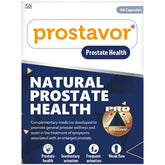Hamstring injury
Hamstring injuries are common among athletes and individuals who engage in activities that involve running, jumping, or sudden changes in direction. Understanding the causes, symptoms, diagnosis, treatment, and prevention of hamstring injuries is essential for effective management and rehabilitation.
Anatomy of the Hamstring Muscles
The hamstring muscles are located on the back of the thigh and are composed of three main muscles: the biceps femoris, semitendinosus, and semimembranosus. These muscles play a crucial role in activities such as walking, running, and jumping, as well as stabilizing the knee joint.
Causes of Hamstring Injuries
Hamstring injuries typically occur as a result of:
- Muscle Overload: Sudden, excessive stretching or contraction of the hamstring muscles, often during activities such as sprinting, jumping, or kicking.
- Muscle Imbalance: Weakness or imbalance between the hamstring muscles and the muscles on the front of the thigh (quadriceps), leading to increased strain on the hamstrings.
- Poor Flexibility: Inadequate flexibility or inadequate warm-up before physical activity can increase the risk of hamstring injuries.
- Previous Injury: Individuals with a history of hamstring injuries are at higher risk of re-injury due to weakened or scarred muscle tissue.
Symptoms
Common symptoms of a hamstring injury may include:
- Sudden Pain: Sharp or stabbing pain in the back of the thigh during physical activity.
- Tenderness: Pain or tenderness in the hamstring muscles when touched or palpated.
- Swelling: Swelling or bruising in the back of the thigh.
- Limited Range of Motion: Difficulty straightening the leg or bending forward at the hip.
- Weakness: Weakness or instability in the leg when walking, running, or jumping.
- Popping Sensation: Some individuals may experience a popping sensation or sound at the time of injury.
Diagnosis
Diagnosing a hamstring injury typically involves:
- Medical History: Evaluation of the individual's symptoms, medical history, and recent physical activity.
- Physical Examination: Assessment of the injured thigh for tenderness, swelling, bruising, and range of motion.
- Imaging Studies: X-rays, ultrasound, or magnetic resonance imaging (MRI) may be performed to confirm the diagnosis and assess the severity of the injury.
Treatment
Treatment for hamstring injuries may include:
- Rest and Ice: Resting the injured leg and applying ice packs to reduce pain, swelling, and inflammation in the acute phase of injury.
- Compression and Elevation: Applying compression bandages and elevating the injured leg above heart level to minimize swelling and promote healing.
- Pain Relief: Over-the-counter pain medications such as acetaminophen or nonsteroidal anti-inflammatory drugs (NSAIDs) may help relieve pain and discomfort.
- Physical Therapy: Rehabilitation exercises, stretching, and strengthening exercises prescribed by a physical therapist can help restore flexibility, strength, and function of the hamstring muscles.
- Gradual Return to Activity: Gradually reintroducing activities such as walking, jogging, and running as tolerated, under the guidance of a healthcare professional.
Prevention
To prevent hamstring injuries, individuals can:
- Warm-Up: Perform dynamic warm-up exercises such as jogging, leg swings, and lunges before engaging in physical activity to prepare the muscles for exercise.
- Stretching: Incorporate regular stretching exercises for the hamstring muscles to improve flexibility and reduce the risk of injury.
- Strength Training: Include strengthening exercises for the hamstring and quadriceps muscles to improve muscle balance and stability around the knee joint.
- Proper Technique: Use proper techniques and form during physical activities, including running, jumping, and lifting weights, to minimize the risk of injury.
- Progressive Training: Gradually increase the intensity, duration, and frequency of physical activity to allow the muscles time to adapt and strengthen.
- Rest and Recovery: Allow adequate time for rest and recovery between training sessions to prevent overuse injuries and fatigue.
Complications
Complications of hamstring injuries may include:
- Chronic Pain: Persistent pain or discomfort in the hamstring muscles, particularly if the injury does not heal properly or if there is a recurrence of injury.
- Re-Injury: Individuals who return to physical activity too soon or without proper rehabilitation may be at higher risk of re-injury.
- Muscle Weakness: Prolonged immobility or inadequate rehabilitation may lead to muscle weakness and decreased function of the hamstring muscles.
When to See a Doctor
Seek medical attention if you experience:
- Severe pain or swelling in the back of the thigh.
- Inability to bear weight on the injured leg.
- Prolonged or worsening symptoms despite self-care measures.
- Recurrent hamstring injuries or chronic hamstring pain.
Conclusion
Hamstring injuries are common among athletes and individuals who engage in physical activities involving running, jumping, or sudden movements. By understanding the causes, symptoms, diagnosis, treatment, and prevention of hamstring injuries, individuals can take proactive steps to minimize the risk of injury, promote recovery, and optimize performance. If you experience a hamstring injury, consult a healthcare professional for appropriate evaluation and management
- Complication of Hamstring injury
- Diagnosis of Hamstring injury
- Hamstring injury
- Hamstring injury myths
- How is Hamstring injury treated?
- Medicine for Hamstring injury
- Remedies for Hamstring injury
- Support for Hamstring injury
- Symptoms associated with Hamstring injury
- The best British Online Pharmacy
- Top 10 UK Pharmacies
- Treatment for Hamstring injury
- What causes Hamstring injury
- What is Hamstring injury
- Where can I buy medicine for Hamstring injury in the UK
- ZimSeller Pharmacy



















